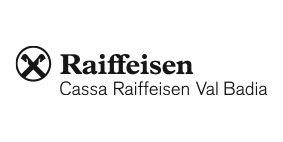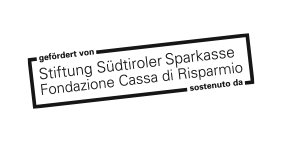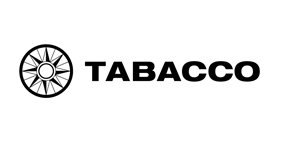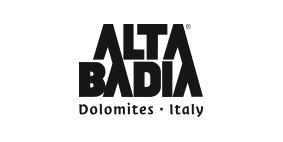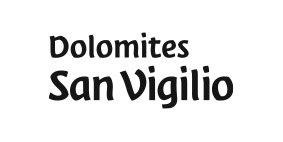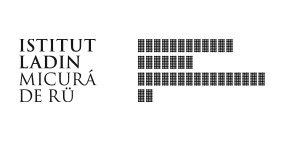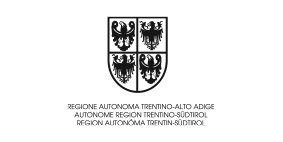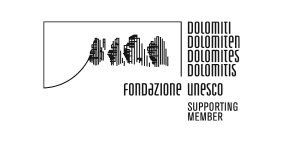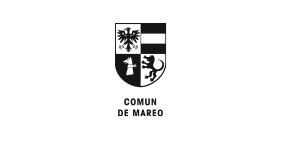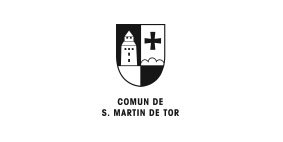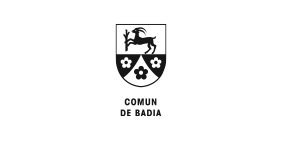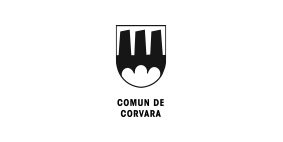Consider, the inherent absurdity — the sheer, crushing improbability — of attempting to conceive of an outdoor installation that is at once ambitious and weatherproof, inventive but at the same time not expensive, is resilient against the brute forces of nature, wind and rain, all while nestling itself harmoniously into the conceptual theme that was given and, at the same time, into the landscape that is, in its own indifferent way, both beautiful and punishing.
Yet, despite these incredible constraints, or maybe even because of them, there was an abundance of proposals arrived, each one a small, defiant act of ingenuity against the material and financial limits. Which, of course, led to the second-order difficulty, possibly the meta-challenge which was selecting only ten, trying to rank, in some coherent fashion, the work of so many who that had managed to turn impossibility into form.
And we, as the jury, we did and congratulations to the all winners and a true thank you to everyone who participated. Thanks!
Stefan Sagmeister, Jury President 2025
Winners of SMACH 2025
Alex Xiaotan Yang, Wentao Guo – China
Carmine Auricchio, Jonathan Coen, Moritz Knopp – Italy/Germany
Elias Jocher – Italy
Hama Lohrmann – Germany
Hans De Backer aka Drukdoenerij – Belgium
Lola Giuffré – Australia
Luca Rossi – Italy
Officine Fabbre, Prometheus, Ats – Italy
Theresa Hattinger – Austria
Zimo ZHANG – China/France
Satellite Project of SMACH 2025
Riccardo Buonafede – Italia
For the seventh edition of the SMACH Biennale, we have chosen a Ladin term that refers to an object: the ‘cu’. It’s a stone used to sharpen the scythe to cut the grass in the meadows. The ‘cu’ speaks of materiality; imagination; craftsmanship; technical evolution; the universality of forms and basic needs; and tools found all over the world.
In the alpine pastures and meadows of Val Badia, there are still a few people who mow by hand, sharpening their blades with the whetstone. Paolo Vinati, a documentary filmmaker and ethnomusicologist, interviewed one of them.
Object Exploration Possibilities
The whetstone, as we have said, conveys multiple themes and stimulates numerous reflections: human and technical evolution; the art of craftsmanship in continuity with the remotest times; the universality of certain tools and gestures; the transmission, or loss, of cultural heritage; the present, past, and future.
〉 Ladin
Por la setima ediziun dla Bienala SMACH unse chirí fora la parora ladina por n oget: la cu. Chësc stromënt fej referimënt al monn antich, pastoral, bucolich, al savëi artejanal, al laur fisich y nia automatisé, ai artefac che á carateristiches universales. Sön les pastöres da munt y sön i pra dla Val Badia él ciamó val’ porsona che siëia a man, amoran la falc cun la cu.
La cu, sciöche i un dit, veicolëia de vigni sort de tematiches y stimolëia tröpes reflesciuns: l’evoluziun umana y chëra tecnica; l’ert da savëi da fá en continuité cun i tëmps plü dalunc; l’universalité de n valgügn stromënc y gestualités; la trasmisciun, o la pordüda, dl’eredité culturala; le presënt, passé y dagní.
〉 Italiano
Per la settima edizione della Biennale SMACH, abbiamo scelto un termine ladino che fa riferimento a un oggetto la "cu". In italiano, la cote, la pietra usata per affilare la falce per tagliare l’erba dei prati. La "cu" introduce spunti tematici che ci parlano di materialità, immaginazione, artigianato, evoluzione tecnica, universalità delle forme e dei bisogni fondamentali dell’umanità. Nei pascoli alpini, e nei prati della Val Badia, ci sono ancora alcune persone che falciano a mano, affilando le loro lame con la cote. Paolo Vinati racconta la storia di uno di essi che nel video che trovate qui accanto, su questa pagina.
La cote, come detto, evoca molteplici temi e stimola numerose riflessioni: l'evoluzione umana e tecnica; l'arte dell'artigianato in continuità con i tempi più remoti; l'universalità di alcuni strumenti e gesti; la trasmissione, o la perdita, del patrimonio culturale; il presente, il passato e il futuro.
〉 Deutsch
Für die siebte Ausgabe der SMACH-Biennale haben wir einen ladinischen Begriff gewählt, der sich auf ein Objekt bezieht: den „cu“, einen Schleifstein, der verwendet wird, um Sensen zu schärfen, mit denen das Gras auf den Wiesen geschnitten wird. Der „cu“ spricht von Materialität, Vorstellungskraft, Handwerkskunst, technischer Evolution, der Universalität von Formen und Grundbedürfnissen sowie von Werkzeugen, die auf der ganzen Welt zu finden sind. In den alpinen Wiesen und Weiden des Gadertals gibt es noch einige Menschen, die von Hand mähen und ihre Klingen mit einem Wetzstein schärfen.
Der Wetzstein, wie bereits erwähnt, vermittelt zahlreiche Themen und regt vielfältige Überlegungen an: die menschliche und technische Evolution; die Kunst des Handwerks in Kontinuität mit den frühesten Zeiten; die Universalität bestimmter Werkzeuge und Gesten; die Weitergabe oder der Verlust des kulturellen Erbes; die Gegenwart, Vergangenheit und Zukunft.
THE JUDGING PANEL
The artistic jury is responsible for evaluating the research, formal and aesthetic aspects of the design proposals. It is composed of:
〉 Peter Senoner
Peter Senoner was born in Bolzano (I) in 1970. From 1994 to 2001 he studies at the Academy of Fine Arts in Munich. Over the years he made several study and work residencies: in 1997 and 2000 in New York City (USA), in 2002 and 2004 in Tokyo (JP), in 2006 and 2008 in Vienna (A), in 2011 and 2012 in Berlin (D) and in 2016 in Detroit (USA). Since 2006 he has been a lecturer at the Institut für Experimentelle Architektur at the University of Innsbruck (A) and since 2021 at the Faculty of Architecture and Design at the Technische Universität Rosenheim (D). From 2018 to 2020 he is a lecturer at the Faculty of Art and Design at the Free University of Bolzano (I). Since 2005 he lives and works in Chiusa, Bolzano (I).
© Rainer Kradisch
〉 Jasmine Deporta
Jasmine Deporta is a multidisciplinary visual artist mainly working in the field of photography. After her Bachelor in Design and Arts in Bolzano (IT) she completed her master's degree in Photography at Ecole Cantonal d’Art de Lausanne (ECAL) in Switzerland, where she is currently based. Wihtin her practice she works by means of photographic methods and experimental working approaches in a transdisciplinary field between different media. Her work has been part of solo and group exhibitions in Berlin, London, Tokyo and in Switzerland, Greece and Italy.
jasminedeporta.com
〉 Zasha Colah
Zasha Colah is the artistic director of Ar/Ge Kunst with Francesca Verga (Bolzano, 2023–). Lecturer in Curatorial Studies Nuova Accademia di Belle Arti (Milan, 2018–). Founding member of Clark House Initiative (Mumbai, 2010–22). Co-curated the 3rd Pune Biennale with Luca Cerizza (2017) and in the curatorial team led by Marco Scotini of the 2nd Yinchuan Biennale (2018). Curator of the 13th Berlin Biennale (June–September 2025).
〉 Emanuele Masi
Emanuele Masi, with an academic background in music, has directed his professional activity towards theatre curating and organisation. Artistic Director of the International Bolzano Dance Festival since 2013, he has relaunched the event on an international level, expanding its roots in the territory. In 2020 his project 'EDEN - dance for a single spectator', created in response to the pandemic, won the Danza&Danza Prize, while in 2022 the Politecnico di Milano awarded him the Gianluca Spina Prize for Digital Innovation. He has also served as Artistic Director of the Teatro Comunale in Bolzano and the dance seasons of the Teatro Sociale in Trento. Since 2015 he has collaborated with the Haydn Foundation of Bolzano and Trento and since 2021 he has been a consultant to the Fondazione Musica per Roma for the programming of dance activities at the Auditorium Parco della Musica and for the direction of the Equilibrio Festival, the restart of which he curated in 2022.
bolzanodanza.it
haydn.it
© Andrea Macchia
〉 Stefan Sagmeister
Stefan Sagmeister has designed for clients as diverse as the Rolling Stones and the Guggenheim Museum. He’s a two time Grammies winner and also earned practically every important international design award.
While his work is steeped graphics, he has also directed a film, created furniture, made products, designed a watch and ventured into clothing.
His books sell in the hundreds of thousands and his exhibitions have been mounted in dozens of museums around the world. His exhibit ’The Happy Show' attracted way over half a million visitors worldwide and became the most visited graphics show in history.
A native of Austria, he received his MFA from the University of Applied Arts in Vienna and, as a Fulbright Scholar, a master’s degree from Pratt Institute in New York.
sagmeister.com
The technical committee gives its opinion regarding the landscape and technical-material aspects related to the projects received through the open call. It is composed of: Isidoro Clara (Craftsman), Walther Ferdigg (Engineer), Gottlieb Moling (Bruneck Forest Inspectorate), Loris Clara (Architect), Astrid Wiedenhofer (Nature Parks Office South Tyrol).














